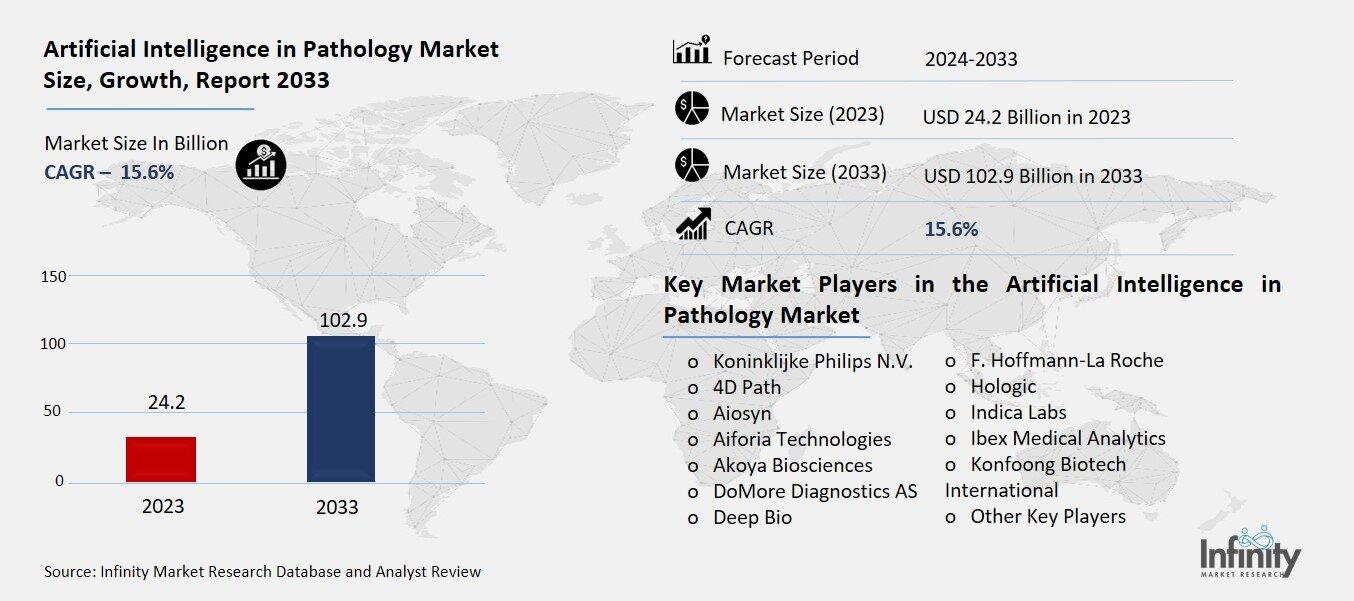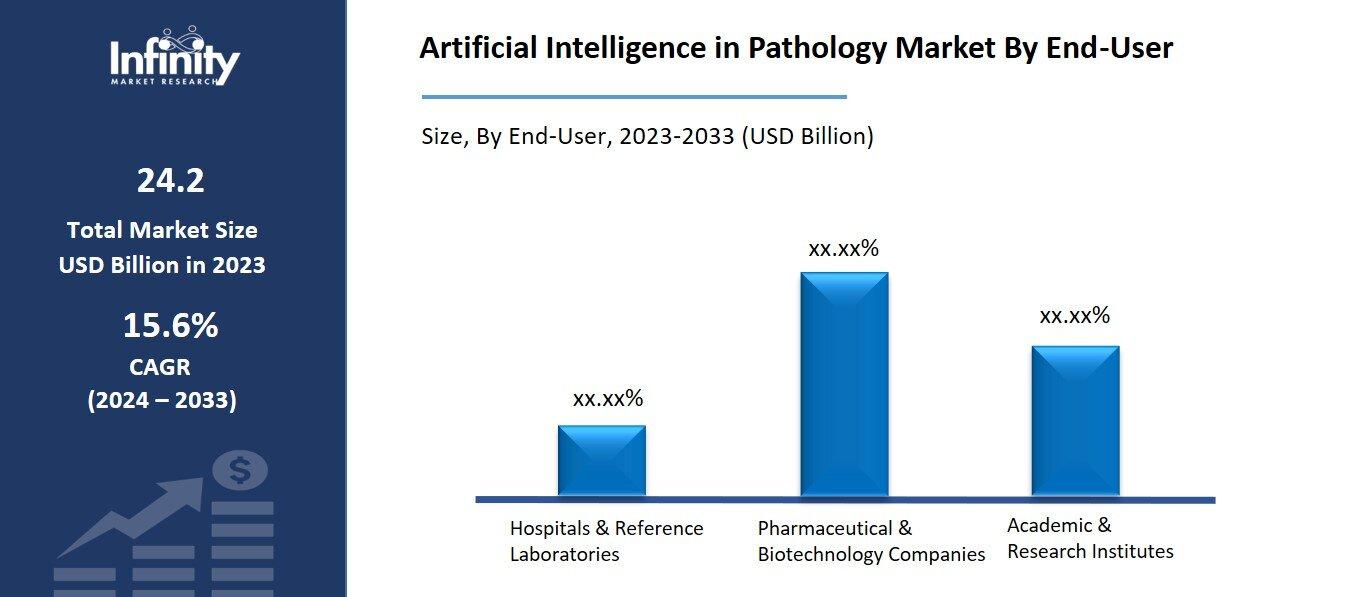
🔐 Secure Payment Guaranteed
Safe checkout with trusted global payment methods.
🌟 Why Choose Infinity Market Research?
At Infinity Market Research, we dont just deliver data — we deliver clarity, confidence, and competitive edge.
In a world driven by insights, we help businesses unlock the infinite potential of informed decisions.
Here why global brands, startups, and decision-makers choose us:
Industry-Centric Expertise
With deep domain knowledge across sectors — from healthcare and technology to manufacturing and consumer goods — our team delivers insights that matter.
Custom Research, Not Cookie-Cutter Reports
Every business is unique, and so are its challenges. Thats why we tailor our research to your specific goals, offering solutions that are actionable, relevant, and reliable.
Data You Can Trust
Our research methodology is rigorous, transparent, and validated at every step. We believe in delivering not just numbers, but numbers that drive real impact.
Client-Centric Approach
Your success is our priority. From first contact to final delivery, our team is responsive, collaborative, and committed to your goals — because you re more than a client; you re a partner.
Recent Reports
Global Myopia Control Lenses Market Report 2025-33
Hyaluronic Acid-based Dermal Fillers Market Report
Artificial Intelligence in Pathology Market
Global Artificial Intelligence in Pathology Market (By Component, Software and Scanners; By Neutral Network, Generative adversarial networks (GANS), Recurrent neural networks (RNNs), Convolutional neural networks (CNNs), and Other Neural Networks; By Application, Drug Discovery, Clinical Workflow, Disease Diagnosis & Prognosis, and Training & Education; By End-User, Hospitals & Reference, Laboratories, Pharmaceutical & Biotechnology Companies, and Academic & Research Institutes; By Region and Companies), 2024-2033
Nov 2024
Healthcare
Pages: 138
ID: IMR1300
Artificial Intelligence in Pathology Market Overview
Global Artificial Intelligence in Pathology Market acquired the significant revenue of 24.2 Billion in 2023 and expected to be worth around USD 102.9 Billion by 2033 with the CAGR of 15.6% during the forecast period of 2024 to 2033. AI has proven to be revolutional in pathology by improving diagnostic capacity, speed, and outlook. In digital pathology, machine learning techniques operate on large data volumes of histopathological images, and help pathologists to identify patterns and abnormalities much faster and accurately.

Modern artificial neural networks can be predisposed on specific patterns, for instance on tumor cells or disease biomarkers, which is necessary for the early diagnosis of cancers and other intricate diseases. In terms of biomarkers, AI also helps with defining metrics used in the therapy assessment and improving the individual approach to patients. AI could lessen the burden on pathologists in terms of work load, specifically concerning the time consuming tasks, keep the costs low besides it could reduce diagnostic errors. In the foreseeable future, AI will remain part of pathology laboratories as a functional assistant to human endeavor in enhancing the general wellness of the patients.
Drivers for the Artificial Intelligence in Pathology Market
Growing Demand for Precision Medicine
The trend toward precision medicine is pushing the demand for enhanced diagnostics, as more and more focus is placed on treating individuals rather than entire populations. Targeted therapies use close and individualized diagnostic information as a basis for determining genetic, molecular, and cell characteristics of a patient’s diseases. This detailed data helps to fine-tune an approach according with the patient’s profile, making treatments more efficacious and less toxic.
In order to satisfy these requirements, continued progress in diagnostics especially in the areas of AI and digital pathology is indispensable. Diagnostic tools provided by AI have the ability to work on huge amounts of data and identify patterns and biomarkers that could be unnoticeable if worked on manually and this makes the diagnostic tests faster and much more accurate. As people opt for personalized medicine as a standard, practitioners are seeing the healthcare system shifting towards concentrating on the latest diagnostic tools for closing the gap existing between conventional medicinal practices and customized methodology.
Restraints for the Artificial Intelligence in Pathology Market
High Initial Costs and Infrastructure Requirements
Implementing digital pathology and AI systems in healthcare settings requires significant upfront investments, posing a major barrier to widespread adoption, especially in low-resource environments. The initial costs include purchasing high-resolution imaging equipment, robust data storage solutions, and sophisticated AI software, all of which are essential for digital pathology workflows. Beyond equipment costs, these systems often require substantial infrastructure upgrades to handle large volumes of data and ensure seamless operation.
Additionally, adopting these technologies demands specialized training for pathologists and technical staff, which further increases time and financial commitments. In resource-limited regions, this combination of high costs and the need for extensive training can restrict access to digital pathology and AI benefits, hindering equal distribution of cutting-edge diagnostic advancements.
Opportunity in the Artificial Intelligence in Pathology Market
Innovations in AI and Machine Learning Algorithms
Continuous advancements in AI models are driving significant improvements in diagnostic accuracy and efficiency, reshaping the healthcare landscape. Enhanced algorithms, especially those in deep learning and machine learning, are capable of identifying intricate patterns within medical images and datasets with unprecedented precision. These improvements enable AI systems to differentiate between subtle nuances that might elude even trained pathologists, which is invaluable for early detection and accurate diagnosis of complex diseases like cancer.
Moreover, recent developments in AI algorithms allow for layered analysis, where multiple data sources such as genetic information, imaging, and clinical records can be combined to provide a more comprehensive view of a patient’s condition. This ability to integrate and analyze complex data supports healthcare professionals in making informed decisions on treatment plans, personalized care strategies, and predicting patient outcomes.
Trends for the Artificial Intelligence in Pathology Market
Integration of AI with Cloud-Based Pathology Solutions
The shift toward cloud-based storage in healthcare, especially in fields like pathology, is transforming how data is accessed, shared, and analyzed. Cloud platforms provide centralized storage for medical images and patient data, allowing pathologists and other healthcare professionals to collaborate seamlessly, regardless of location. This ease of access is particularly valuable in multidisciplinary cases where specialists from different fields need to review and discuss diagnostic findings.
Moreover, cloud infrastructure supports the scalability of AI-powered solutions, enabling healthcare providers to process vast amounts of data without the limitations of in-house hardware. Cloud environments also allow providers to quickly scale their AI capabilities up or down based on demand, making advanced diagnostic tools more accessible across institutions of various sizes. Additionally, cloud-based AI applications can be updated in real-time, ensuring that healthcare professionals always have access to the latest and most accurate algorithms. This scalability not only enhances operational efficiency but also improves diagnostic accuracy and patient outcomes by leveraging a vast network of interconnected medical insights and resources.
Segments Covered in the Report
By Component
o Software
o Scanners
By Neutral Network
o Generative adversarial networks (GANS)
o Recurrent neural networks (RNNs)
o Convolutional neural networks (CNNs)
o Other Neural Networks
By Application
o Drug Discovery
o Clinical Workflow
o Disease Diagnosis & Prognosis
o Training & Education
By End-User
o Hospitals & Reference Laboratories
o Pharmaceutical & Biotechnology Companies
o Academic & Research Institutes
Segment Analysis
By Component Analysis
On the basis of component, the market is divided into software and scanners. Among these, software segment acquired the significant share in the market owing to its critical role in managing, analyzing, and interpreting vast amounts of medical data. Advanced software solutions facilitate seamless image processing, enabling pathologists to efficiently examine high-resolution digital slides, identify patterns, and detect abnormalities with precision.
Software also supports the integration of AI algorithms that aid in automating repetitive tasks and enhancing diagnostic accuracy, reducing turnaround time for complex cases. Additionally, digital pathology software often includes tools for data sharing and remote collaboration, which are increasingly important in telepathology and multidisciplinary consultations.
By Neutral Network Analysis
On the basis of neutral network, the market is divided into generative adversarial networks (GANS), recurrent neural networks (RNNs), convolutional neural networks (CNNs), and other neural networks. Among these, convolutional neural networks (CNNs) segment held the prominent share of the market due to their exceptional effectiveness in image analysis, particularly in fields like pathology where high-resolution imaging is central to diagnostics. CNNs are specifically designed to process and recognize patterns in visual data, making them highly suitable for tasks such as detecting tumors, identifying cellular structures, and classifying tissue samples with accuracy. Their ability to learn spatial hierarchies from images enables CNNs to detect complex features that might be missed by traditional methods, which is invaluable in medical diagnostics.
By Application Analysis
On the basis of application, the market is divided into drug discovery, clinical workflow, disease diagnosis & prognosis, and training & education. Among these, drug discovery segment held the significant share of the market. AI-driven pathology solutions enable researchers to analyze vast datasets, identify potential drug targets, and predict therapeutic efficacy much faster than traditional methods. This is particularly valuable in early-stage drug discovery, where high-throughput screening of compounds and biomarker identification are essential. AI tools help reduce time and costs by enabling more accurate predictions about drug interactions, toxicity, and outcomes, which ultimately streamlines the path from laboratory research to clinical trials.
By End-User Analysis
On the basis of end-user, the market is divided into hospitals & reference, laboratories, pharmaceutical & biotechnology companies, and academic & research institutes. Among these, hospitals & reference segment held the most of the share of the market. Hospitals and reference labs are central to healthcare diagnostics, handling large volumes of patient samples that require fast, accurate analysis for disease detection, diagnosis, and monitoring.

The adoption of AI-powered pathology tools in these settings enhances diagnostic efficiency and accuracy, helping pathologists detect conditions like cancer at early stages and improving patient outcomes. Furthermore, hospitals benefit from AI-assisted workflows that reduce turnaround times, optimize resource allocation, and support telepathology, enabling collaboration with specialists remotely.
Regional Analysis
North America Dominated the Market with the Highest Revenue Share
North America held the most of the share of 31.7% of the market. The region is home to advanced healthcare infrastructure, including state-of-the-art hospitals and research facilities, which are equipped to integrate cutting-edge technologies like digital pathology and artificial intelligence. Additionally, significant investments in healthcare research and development, particularly in the United States, have fostered innovation in diagnostic tools and methodologies, driving demand for AI-powered solutions in pathology.
Moreover, North America boasts a high prevalence of chronic diseases, including cancer, which necessitates efficient and accurate diagnostic practices. This urgency has accelerated the adoption of digital pathology systems among healthcare providers seeking to enhance diagnostic capabilities and improve patient outcomes.
Competitive Analysis
The competitive landscape of the digital pathology market is characterized by a dynamic mix of established companies and innovative startups, all vying to leverage advanced technologies to enhance diagnostic processes. Major players like Roche, Philips, and Leica Biosystems are at the forefront, offering comprehensive digital pathology solutions that integrate cutting-edge imaging, AI algorithms, and data management tools. These companies are continually investing in research and development to refine their offerings and expand their product portfolios. Additionally, emerging companies and technology startups are introducing novel AI-driven solutions, focusing on improving diagnostic accuracy and streamlining workflows.
Recent Developments
In October 2023, F. Hoffmann-La Roche Ltd. partnered with Ibex Medical Analytics Ltd. to deliver AI-powered solutions for cancer detection, with backing from Amazon Web Services, Inc., a leading cloud service provider. This collaboration seeks to enable pathology laboratories to utilize Ibex's AI-driven decision support tools via the navify Digital Pathology software platform.
In July 2023, Aiforia Technologies Plc partnered with Orion Corporation, a Finnish pharmaceutical company, to collaboratively develop artificial intelligence (AI)-driven image analysis solutions for preclinical research and product development. This partnership allows Aiforia to leverage Orion's insights into the specific requirements of its preclinical customer base, enhancing the relevance and effectiveness of their AI solutions.
Key Market Players in the Artificial Intelligence in Pathology Market
o Koninklijke Philips N.V.
o 4D Path
o Aiosyn
o Aiforia Technologies
o Akoya Biosciences
o DoMore Diagnostics AS
o Deep Bio
o F. Hoffmann-La Roche
o Hologic
o Indica Labs
o Ibex Medical Analytics
o Konfoong Biotech International
o Other Key Players
|
Report Features |
Description |
|
Market Size 2023 |
USD 24.2 Billion |
|
Market Size 2033 |
USD 102.9 Billion |
|
Compound Annual Growth Rate (CAGR) |
15.6% (2023-2033) |
|
Base Year |
2023 |
|
Market Forecast Period |
2024-2033 |
|
Historical Data |
2019-2022 |
|
Market Forecast Units |
Value (USD Billion) |
|
Report Coverage |
Revenue Forecast, Market Competitive Landscape, Growth Factors, and Trends |
|
Segments Covered |
By Component, Neutral Network, Application, End-User, and Region |
|
Geographies Covered |
North America, Europe, Asia Pacific, and the Rest of the World |
|
Countries Covered |
The U.S., Canada, Germany, France, U.K, Italy, Spain, China, Japan, India, Australia, South Korea, and Brazil |
|
Key Companies Profiled |
Koninklijke Philips N.V., 4D Path, Aiosyn, Aiforia Technologies, Akoya Biosciences, DoMore Diagnostics AS, Deep Bio, F. Hoffmann-La Roche, Hologic, Indica Labs, Ibex Medical Analytics, Konfoong Biotech International, and Other Key Players. |
|
Key Market Opportunities |
Innovations in AI and Machine Learning Algorithms |
|
Key Market Dynamics |
Growing Demand for Precision Medicine |
📘 Frequently Asked Questions
1. Who are the key players in the Artificial Intelligence in Pathology Market?
Answer: Koninklijke Philips N.V., 4D Path, Aiosyn, Aiforia Technologies, Akoya Biosciences, DoMore Diagnostics AS, Deep Bio, F. Hoffmann-La Roche, Hologic, Indica Labs, Ibex Medical Analytics, Konfoong Biotech International, and Other Key Players.
2. How much is the Artificial Intelligence in Pathology Market in 2023?
Answer: The Artificial Intelligence in Pathology Market size was valued at USD 24.2 Million in 2023.
3. What would be the forecast period in the Artificial Intelligence in Pathology Market?
Answer: The forecast period in the Artificial Intelligence in Pathology Market report is 2024-2033.
4. What is the growth rate of the Artificial Intelligence in Pathology Market?
Answer: Artificial Intelligence in Pathology Market is growing at a CAGR of 15.6% during the forecast period, from 2024 to 2033.


🔐 Secure Payment Guaranteed
Safe checkout with trusted global payment methods.
🌟 Why Choose Infinity Market Research?
- Accurate & Verified Data:Our insights are trusted by global brands and Fortune 500 companies.
- Complete Transparency:No hidden fees, locked content, or misleading claims — ever.
- 24/7 Analyst Support:Our expert team is always available to help you make smarter decisions.
- Instant Savings:Enjoy a flat $1000 OFF on every report.
- Fast & Reliable Delivery:Get your report delivered within 5 working days, guaranteed.
- Tailored Insights:Customized research that fits your industry and specific goals.




